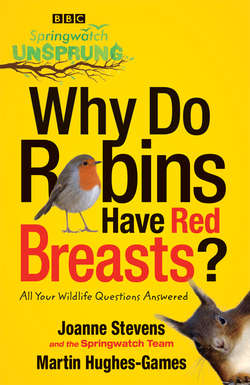Читать книгу Springwatch Unsprung: Why Do Robins Have Red Breasts? - Jo Stevens - Страница 23
Hello Mum
ОглавлениеI believe baby birds imprint on the first thing they see as they emerge from the egg. So how does the cuckoo find a mate when they are raised by surrogate parents that are usually smaller, looking nothing like a likely mate? Nick
There are several types of imprinting in chicks. The behaviour that Nick refers to is called filial imprinting, in which a young bird becomes very attached to a particular object soon after hatching, usually its parent. This is vital for birds such as geese, ducks and other waterfowl and waders that leave the nest shortly after hatching. If a chick is to survive it must follow and stay with its parent. Hatchlings from artificially incubated eggs will latch on to whatever they see during the critical imprinting period, whether it is another animal, human, or even an inanimate object, because the instinct is so strong.
There is evidence that some birds also experience sexual imprinting, learning from their parent’s appearance how future mates should look and sound. In essence, a chick learns to recognise members of its own species so that later in life it can court and mate with its own kind. This process would be disastrous for a cuckoo, though, because it is brought up in the nest of another species such as a reed warbler, dunnock or meadow pipit.
Cuckoos are brood parasites and rely on parents of the host species to bring up their chicks. Female cuckoos wait for a suitable nest to be left unattended before flying down, removing one of the host’s eggs and replacing it with one of her own. She can lay the egg and make a quick getaway in about 10 seconds. When the unsuspecting parents return they incubate the cuckoo egg and raise the chick as their own. The cuckoo chick usually hatches first and ejects all the other eggs or chicks from the nest, ensuring it has no rivals for its surrogate parents’ attention. Meanwhile the cuckoo parents return to Africa and never see their chicks. Instead, the host parents work tirelessly to feed the enormous chick, which can grow to over three times their own size. When the cuckoo finally fledges, it must find its own way to Africa. In the cuckoo’s case, the ability to migrate must be genetically hard-wired in the brain and is innate rather than learned.
But how does a cuckoo avoid sexual imprinting on the wrong species and know that it is a cuckoo rather than a reed warbler or a dunnock? Biologists aren’t entirely sure how cuckoos learn to recognise a mate and there may be several processes at work. Perhaps some innate elements are later reinforced by mixing with other cuckoos. Brown-headed cowbirds, which use the same breeding strategy as cuckoos, have been shown to use a species-specific ‘password’ to trigger their learning. They make a particular chatter call when they join up after fledging and then learn more about their species. They also look to themselves and reference their own traits, such as ‘that bird looks like me so probably belongs to the same species’. Cuckoos are likely to have a similar system for working out their own identity and recognising which birds are potential mates.
